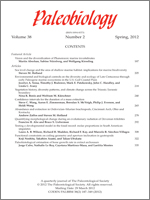A developmental model, based upon murine rodents, has been proposed by Kavanagh et al. (2007) to explain lower molar proportions in mammals. We produce a clade-wide macroevolutionary test of the model using the dental evolutionary trends in a unique radiation of extinct mammals endemic to South America (“Meridiungulata”) that comprise a diverse array of molar morphologies. All of the South American ungulate groups examined follow the inhibitory cascade model with the exception of two groups: Interatheriidae (Notoungulata) and Astrapotheria. For most taxa studied, ratios between lower molar areas are greater than 1.0, indicating a weak inhibition by m1 on the subsequent molars in the tooth row, and a trend to greater absolute size of the posterior molars. Comparisons of mean ratios between clades indicate that a significant phylogenetic signal can be detected, particularly between the two groups within Notoungulata— Typotheria and Toxodontia. Body mass estimates were found to be significantly correlated with both m3/m1 and m2/m1 ratios, suggesting that the larger body size achieved the weaker inhibition between the lower molars. Molar ratio patterns are examined and discussed in relation to the independent and numerous acquisitions of hypsodonty that are characteristic of dental evolution in “Meridiungulata.”
How to translate text using browser tools
1 March 2012
Testing a developmental model in the fossil record: molar proportions in South American ungulates
Laura A. B. Wilson,
Marcelo R. Sánchez-Villagra,
Richard H. Madden,
Richard F. Kay
ACCESS THE FULL ARTICLE

Paleobiology
Vol. 38 • No. 2
Spring 2012
Vol. 38 • No. 2
Spring 2012




